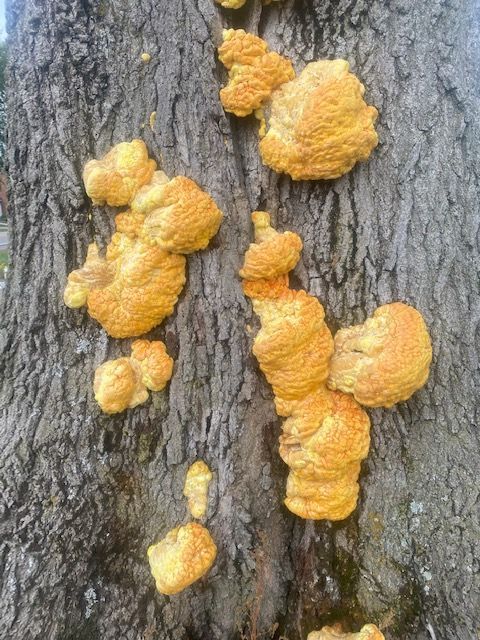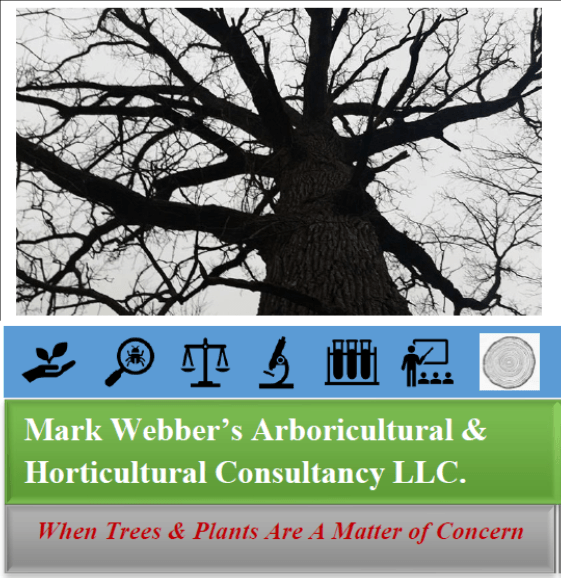Technical Arboricultural & Horticultural Articles
Technical Arboricultural & Horticultural Articles

By Mark Webber
•
September 21, 2024
Watering Established Trees It's a common misconception that a tree's roots are a mirror image of the aboveground canopy. In reality, an established tree's roots usually extend well beyond the edge of the canopy, or drip line. Although some anchor roots may reach deep into the soil, most tree roots are concentrated in the upper 12" to 18" of soil. When watering established trees, provide a deep, soaking irrigation to the entire area beneath the tree canopy and extending several feet beyond the drip line. Ideally, you should moisten the soil to a depth of 10" each time you water. To prevent rot, don't apply water to the area directly around the trunk. Know When to Water The easiest way to check soil moisture is to take a long (8"-plus) screwdriver and poke it into the soil. It will pass easily into moist soil, but be difficult to push into dry soil. If you can't poke it in at least 6", it's time to water. This technique works best in clay and loam soils. How to Apply Water Overhead sprinklers are the easiest way to cover large expanses, but they're inefficient, losing up to half the water to evaporation. Trees are better served by watering methods that apply water slowly, right at soil level. It may take several hours to properly water a single mature tree. Soaker hoses are an efficient way to water trees because they're porous and release water slowly. Encircle a tree with a spiral of soaker hose and run it for an hour or more — as long as it takes for water to penetrate 6" or 8", using the screwdriver test. Source:https://www.gardeners.com/how-to/when-to-water-trees/7931.html

By Mark Webber
•
July 31, 2024
I made a fun find yesterday while conducting a tree inspection: an acorn Plum Gall. Galls are one of the more intriguing sides of nature to view and behold. They come in all shapes, sizes, colors, and textures—truly one of nature’s more “artistic” flourishes! Oak trees, in particular, appear to get many different types of galls.
By Mark Webber
•
March 20, 2024
Property owners and managers often want well-defined bed lines separating the turf grass from the planting bed, which usually includes a tree. When using certain products, the bed edge is inserted into the soil, resulting in a well-defined separation. However, trees in most urban settings have shallow roots, and these installed products are placed deep enough for the tree in question to react by growing roots in the same condition as the installed product over time. The result is a tree with stem-girdling roots (SGRs) that cause the plant to have a dysfunctional root system, crushed and damaged vascular cambium, and an interrupted vascular system that will have limited ability to move vital nutrients, water, and carbohydrates inside the plant.

By Mark Webber
•
January 3, 2024
The Spotted Lanternfly (Lycorma delicatula) is native to China and was first detected in Pennsylvania in September 2014. Spotted lanternfly feeds on a wide range of fruit, ornamental and woody trees, with tree-of-heaven being one of the preferred hosts. Spotted lanternflies are invasive and can be spread long distances by people who move infested material or items containing egg masses. Juvenile spotted lanternflies, known as nymphs, and adults prefer to feed on the invasive tree of heaven (Ailanthus altissima) but also feed on a wide range of crops and plants including grapes, apples, hops, walnuts and hardwood trees. Spotted lanternfly populations are currently found in 14 states including Connecticut, Delaware, Indiana, Maryland, Massachusetts, Michigan, New Jersey, New York, North Carolina, Ohio, Pennsylvania, Rhode Island, Virginia, and West Virginia. More information can be found here

By Mark Webber
•
December 19, 2023
The first time I saw this tree, I had to ask how it became what we see today. What caused it to look like an elephant? However, I realized that tree development and growth are similar to human development. Our fundamental requirements are the same: air, food, water, and shelter. Beyond these general requirements, what makes us unique is primarily defined by where we grow up, what kind of environment we have around us, our fellow neighbors, and our support system. Trees are no different and have many other behaviors based on whether they grow in the mountains, on a hillside, beside a river, by a lake, in a valley, or your garden. These aspects make us unique, define who we are, and are part of our lives. While many defining characteristics are held within our minds, humans can physically see and touch these differences in trees. They present themselves in tree leaves, shape, bark, size, seeds, and wood. Even after a tree has died, we can look at the wood to understand its history and what makes it unique. Wood is grown in trees to facilitate the movement of fluids and nutrients from the ground to the leaves to produce sugars via photosynthesis. More wood that reflects the tree's current state is made every year. As children, many of us counted the annual growth rings in logs to determine the age of a tree. An outward tree's appearance years after birth changes, just like most people have also changed.

By Mark Webber
•
November 11, 2023
Hypoxylon canker is a disease caused by the fungus Biscogniauxia atropunctata. It is often one of several factors ultimately responsible for tree death. Hypoxylon damages tissues in the inner bark and sapwood that are used by the tree to move water from soil to the leaves. Vigorous, healthy trees are colonized by the fungus, but only damaged or stressed trees develop cankers and are killed.

By Mark Webber
•
March 8, 2023
Often the public thinks that they can pick and place plants in their landscape like furniture. Before you plant anything do a investigation of the zone hardness, soils and other factors. It's always better to plan and investigate before you plant. Work with a qualified, certified and registered Arborist for the best results. https://www.expert-arborist.com/landscape-design

By Mark Webber
•
October 22, 2022
Read this article in Dayton Magazine about "Nature Paints a Colorful Leaf Palette". Mark Webber was interviewed about the impact that tree leaves have in the fall. (click this link) https://www.thedaytonmagazine.com/nature-paints-a-colorful-leaf-palette/?mc_cid=d2723cd330&mc_eid=178fc42b56

By Mark Webber
•
September 25, 2022
Often when we find an insect on valuable plants, we think it will cause severe economic harm to them. Often, these potential pests offer no actual liability and are just a nuisance with greater ecological value to the environment than to the plants they occasionally eat. Today, I was planting hard garlic for next year's crop when I found these caterpillars on my fall-winter crops of Carrot and Fennel. I identified these caterpillars were the larvae stage of the Eastern Black Swallowtail Butterfly(Papilio polyxenes asterius). The Eastern Black Swallowtail Butterfly is one of our most commonly studied swallowtails. Although it is admired for its beauty, it is one of the few butterflies that may occasionally be considered a pest. Various other names have been known, including black swallowtail, American swallowtail, parsnip swallowtail, parsley swallowtail, celery worm, and caraway worm. Although black swallowtail caterpillars feed on a number of cultivated plants, they are never sufficiently common to cause a problem in commercial agriculture. If control is required in home gardens, hand-picking is recommended. If hand-picking is impractical, either a foliar insecticide or the bacterial insecticide Bacillus thuringiensis provides effective control. Also, numerous insect predators and wasp and fly parasitoids of the caterpillars provide some natural control. Sources: Miller JY. (editor). 1992. The Common Names of North American Butterflies. Smithsonian Institution Press. Washington, D.C. 177 pp https://entnemdept.ufl.edu/creatures/bfly/bfly2/eastern_black_swallowtail.htm (Collected on 9/25/2022)


